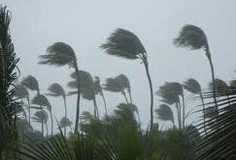
The technical term for herpes on the face is herpes simplex virus type 1. This particular virus causes the outbreak of cold sores, fever blisters, and in some cases, bumps on the inside of the mouth. Currently, approximately 80% of the population suffers from HSV-1, and that number is steadily growing.
Everyone’s facial herpes outbreaks are different. Generally, the first outbreak is more painful than the recurrences. Some people may suffer with swollen and red gums or painful sores on the inside of the mouth, while others just get a cold sore on the lip. Some carriers of the virus don’t get blisters or sores at all.
These people tend to get a sore throat or a fever, which is why it isn’t thought of as herpes. Once you become infected, with the virus, you stay infected for life, but there is no cause for alarm. Often times, the recurrent outbreaks will be less traumatic than the first and can be treated with a variety of medications, both prescription and natural.
There are numerous ways to contract herpes on the face. The most common, is by kissing someone who is already a carrier of the virus. Other ways you can catch the virus is by putting your mouth on a water fountain, performing oral sex on someone that suffers from genital herpes, and drinking from someone else’s glass, to name a few.
Spreading the virus to others is also very easy to do. If you suffer from facial herpes, it is best to avoid coming in contact with someone during a visible outbreak. Don’t allow anyone drink from your glass. Also, refrain from kissing anyone, especially children due to their weaker immune system.
Recurrences of facial herpes outbreaks are rare, but can be triggered by sun exposure, emotional stress, dental work, hormones, and illness (i.e. other infection in the body). You can usually detect an outbreak by symptoms such as itching or tingling, fever and swollen lymph nodes. There may be pain involved, but the level of discomfort differs between carriers.
As stated before, there are many treatment options available to help with herpes on the face. Your doctor will know the best medications for controlling outbreaks, however, some medications have a number of side effects. To avoid these side effects, try using one of the many natural topical creams or ointments to make your outbreaks more bearable. In most cases, outbreaks clear up within 7 to 10 days, without scarring.
HSV-1 will rarely result in more than just facial herpes. There are, however, times when it will cause more serious infections, such as HSV encephalitis, an infection of the brain, HSV meningitis and ocular herpes, which is an infection of the eye. HSV-1 can also be passed along to children. This infection is called HSV neonatal, which is acquired from the mother around the time of birth.
The best way to keep herpes of the face under control is by staying aware of all the herpes information out there. Keep in mind that although very rare, the virus can be passed even when there’s no visible outbreak. By staying cautious, you will just fine. There is no need to fear HSV-1–you have the power to keep it under control.

Source by Sheldon Miller
 Vitamin Agent The Health & Naturalistic Source
Vitamin Agent The Health & Naturalistic Source





